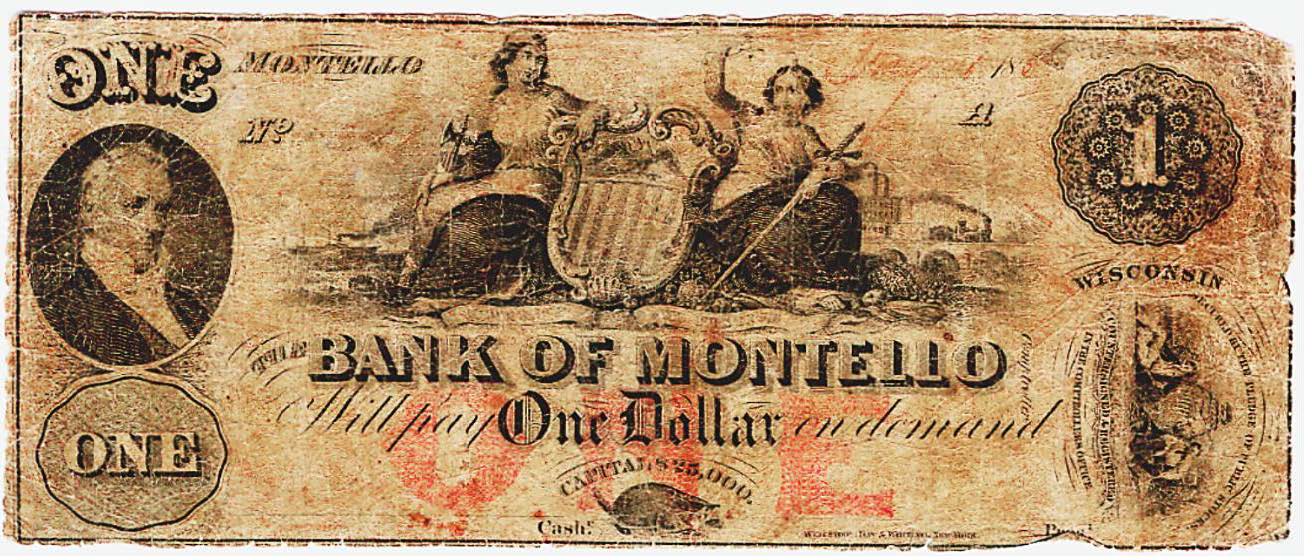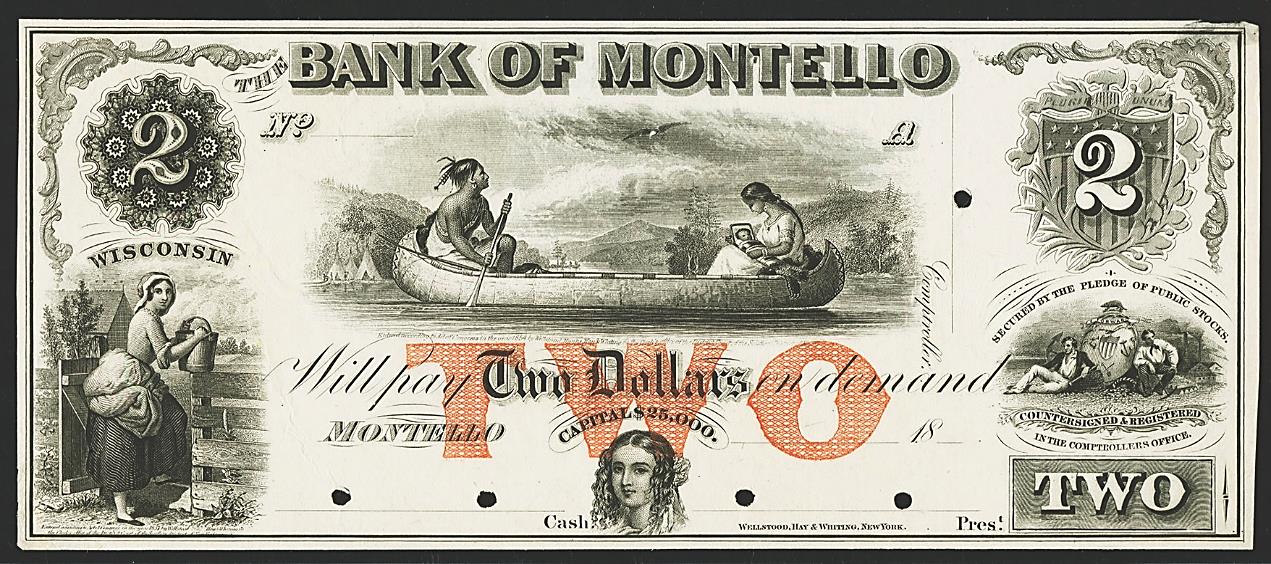
NOW Articles Written By Members
Bullion And Coin Tax Exemption – Act Now!
Is There A Twenty Cent Piece We Can Add To A Collection
Capped Bust Half Dollars: A Numismatic Legacy
U.S. Innovation Dollars: Our Most Under-Collected Coin?
My 2023 ANA Summer Seminar Adventure
In defense of the American Women's Quarters
A look back in numismatic history – the Hicksville Silver Dollar Hoard
The proofs so few of us collect: Jefferson Nickels
A look back in numismatic history – a story too good to be true
Kilroy promotes war bond sales
Just passing through a short-lived bank
The Kewaunee Line Encased Coin Folder
Lyman C. Draper: Collector, Historian, Genealogist
>> More articles in the Archive
For more NOW Articles Written By Members,
<< More articles in the Archive
Early Banking in Montello, Wisconsin
Marquette County 1857-1860
[by Walter Blada and Tom Snyder #797]
The Kelsey Family (from the History of Montello, Wisconsin)
The Kelsey family was a well-known and influential family of Western New York. William H. the eldest brother was a lawyer of eminence, who served as District Attorney and Surrogate of Livingston County, Oswego, New York for a considerable time, and was also a member of Congress from New York for four terms. He died May 18, 1879 leaving a wife and daughter.
Edwin Bolivar Kelsey born May 13, 1826 grew up in his native Livingston County and received a good English education. He learned the trade of a printer and was afterward foreman in the Daily Advertiser office in Rochester, New York for several years. Soon after attaining his age of majority, he came to Wisconsin, locating in Prairieville (now Waukesha) where he studied law and was admitted to the Wisconsin bar. On the third day of July, 1851 the village plat of Montello was surveyed by Henry Menton and the Hon. G. H. Benton who became later Governor of Iowa. Edwin B. Kelsey and Henry S. Crandell became the proprietors of the new village. Since that time, Mr. Kelsey has been prominently identified with the interests of the village and Marquette County. He was a man of marked ability and was elected to the Wisconsin Legislature as a Democrat in 1851, serving two sessions. In 1855 he was elected to the State Senate and in both houses proved to be an able and faithful officer. His older brother Charles arrived in Montello in 1854 and the brothers established a grist mill on property owned by Edwin. In 1857 they established the Bank of Montello with Edwin B. Kelsey, president and Charles S. Kelsey, as cashier.

The only surviving one dollar note issue from the Bank of Montello. Formerly from the Herb and Martha Schingoethe collection and the Chet Krause collection.
Their one dollar bank note of issue, pictured on the previous page, portrayed the vignette of Liberty and Justice above center and the then current Democratic president James Buchanan at the left. Below center is the appropriate badger and Wisconsin seal at right. The brother’s signatures once graced this bill, but have long since faded. It is the only survivor known from the banks’ circulation, as $8,128 in gold coin was forwarded to the State comptroller covering redemption after the banks’ closure. Some town’s banks of the era closed and had insufficient money to redeem all their circulation. The bank also issued a two dollar denomination which is today known only in its proof form. One proof specimen of each denomination is held in the archives of the Wisconsin Historical Society. The second known $2 proof is also held in this private collection. The bank closed in late 1860, about 3 weeks after the presidential election won by Abraham Lincoln. Edwin, besides being an entrepreneur and bank president, was an aspiring Democrat politician who became ill after traveling with the Stephen Douglas presidential campaign, then died from consumption (tuberculosis) in Montello on February 2, 1861, leaving a widow and three children. His family later moved to California in 1867 remaining there with the exception of the youngest daughter who became a resident of Buffalo, New York. Candidate Stephen Douglas also became ill and died June 3, of 1861.
Charles S. Kelsey was born in Perry, New York, Oct 7, 1822. Like his brothers, learned the trade of a printer in his youth and was employed on the force of the Livingston Republican in Geneseo, New York, and later worked at his trade in the city of Rochester. Abandoning that occupation, he worked in an iron foundry until his migration to Montello in September, 1854. Partnering with his brother they built the first flouring mill which was completed in 1855 and in 1857 opened the bank. The banking business was sold and removed to Princeton after Edwin’s death. Montello was then without a bank until 1880. The successful mill was operated by the brothers until Edwin’s death and by Charles until 1870. Charles’ wife Lucretia having passed away in 1869. They were parents of three sons and a daughter. One son went to southern California, another became a successful lawyer in Geneseo, New York and the daughter Julia became a teacher and the post-mistress of Montello. Charles then joined Benjamin Hall and organized the Wisconsin Industrial Association, and erected the woolen mill in Montello. Blaming Democrats for his brothers premature death at age 34, Charles then served four years as an anti-slavery Republican State Senator, covering the years when the Civil War was in progress and he also was a member of the General Assembly in 1867, 1873 and 1880.
Charles was also Deputy Warden of the State Penitentiary at Waupun, from December 1869 until October 1871. He was commissioner of the first war draft in 1862. He filled the office of County Superintendent of Schools of Marquette County from January 1887 to January, 1889. He then ran the Indian Agency in Keshena, Wisconsin from 1890 to 1893. These were all political appointments. As a legislator, he was true to his convictions and labored for the best interests of the people in general. He ranked high in business circles as a fair and honest entrepreneur, possessing judicious management skills. He was esteemed by all as a worthy, upright and honorable citizen. The Kelsey family members are all buried in their family plot at Geneseo, New York.

Above is one of two known proof notes of the two dollar denomination. The engraved vignette of the Indian Family in a canoe is particularly striking. At left is a rural milk maid, and lower center is the facial portrait of a young lady. At right is the obligatory state seal. The red TWO is called the protector and curbs alterations to a higher denomination. Proofs were the first samples of a print order delivered to the bank for the officer’s approval. A duplicate set was retained by the bank note company. They are punch cancelled where the authorizing signatures will be affixed. The one and two dollar proofs held by the Wisconsin Historical Society in Madison are assumed to be those delivered to the Kelsey brothers in 1857. This example should be the one retained by the bank note company located in New York. There is another one dollar proof in existence and it was offered for sale in 2016. These are wonderful relics of Wisconsin’s rich history.
These proof notes were formerly a part of the Eric P. Newman collection in St. Louis. In 2015 at the age of 104, Mr. Newman decided to sell his large and wonderful collection of numismatic holdings.

Have an interesting numismatic topic you’d like to share with your fellow NOW members?
Send your article to evan.pretzer@protonmail.com today!!!